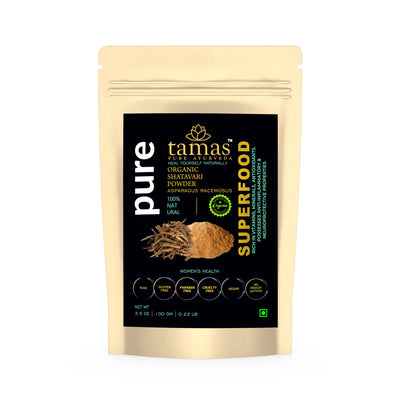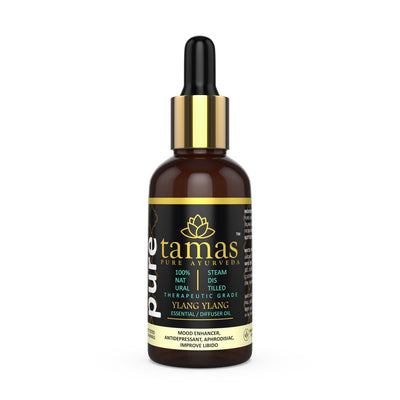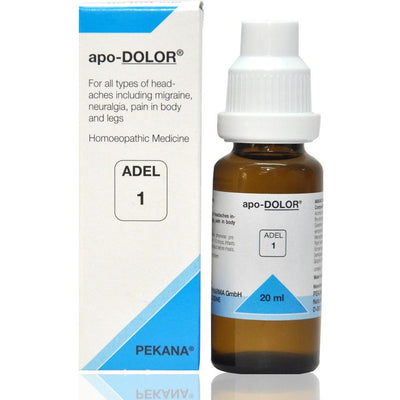
Pathyashadangam Kwath
When one has a headache it is the easiest thing to just pop a pill and go on with our day. But Ayurvedic treatment does not just address the symptom and aims to treat the root of the problem. Pathyashadangam Kwath is an Ayurvedic medicine used to help in experiencing relief from migraines. It is also known to be useful in the treatment of sinusitis headache and Trigeminal neuralgia.
The Pathyashadangam Kwath is a headache treatment aid that helps treat all pain in the face area and also improves vision and night blindness. It helps to calm aggravated Kapha and Pitta related problems.
Ingredients
Pathya (Terminalia chebula)
Dosage
15 ml twice daily diluted with 60ml of boiled and cooled water or as prescribed by an Ayurvedic physician. Self-medication is not advised.
Ayurvedic Perspective on Headaches And Neuralgia
Headaches
A headache is defined as a pain in the face, skull, part of the face or entire head. It may be constant, intermittent or throbbing. A headache may occur with no reason or be triggered by some activity. It can be acute or recurring. Sometimes headaches, especially migraine headaches are accompanied by nausea, vomiting and light sensitivity. Headaches are classified as primary headaches, secondary headaches and other neuralgias.
Primary headaches are common and include tension, cluster and migraine headaches. Secondary headaches usually occur as a result of an injury or underlying condition such as sinusitis or meningitis. Neuralgias are a very severe and chronic type of pain that occurs due to an inflammation or irritation of a cranial nerve. Trigeminal neuralgia occurs when the trigeminal nerve is affected. This is the nerve that connects the face to the brain. Migraine headaches are usually caused when the structures of the brain get inflamed or irritated. Since the brain itself feels no pain, the areas around the brain get infected resulting in pain in the head region. Some conditions such as dehydration and infections also have headaches as a symptom. When there is a change in the flow of blood or trauma to the head, it can result in a headache.
When one has a headache it is the easiest thing to just pop a pill and go on with our day. But Ayurvedic treatment does not just address the symptom and aims to treat the root of the problem. Pathyashadangam Kwath is an Ayurvedic medicine used to help in experiencing relief from migraines. It is also known to be useful in the treatment of sinusitis headache and Trigeminal neuralgia.
The Pathyashadangam Kwath is a headache treatment aid that helps treat all pain in the face area and also improves vision and night blindness. It helps to calm aggravated Kapha and Pitta related problems.
Ingredients
Pathya (Terminalia chebula)
- Balance all three Doshas
- Helps detoxify
- Supports healing
- It is used in Ayurveda as an antibacterial and anti-inflammatory
- Indian gooseberry
- It is rich in Vitamin C
- It is used in Ayurvedic medicine as an antioxidant, immunomodulatory and anti-inflammatory
- Supports gut health
- Balances the Kapha and Pitta Doshas
- Turmeric
- It is used in traditional medicine for its many health benefits. It is commonly used as a home remedy and Ayurvedic medicine for cough and cold.
- The Neem tree
- All the different parts of this tree are used in traditional medicine formulations and Ayurveda.
- It is known to treat wounds, stomach problems, worms, skin problems, diabetes, piles and eye issues. It is used in Ayurvedic medicine to protect the liver and also helps in detoxification.
- The bark and leaves of the Neem tree are used as a blood purifier, to prevent vomiting, nausea and fever.
- The leaves have a carminative effect.
- The flowers are used for stomach disorders.
- The neem tree balances the Kapha and Pitta Doshas
- It balances all the three Doshas
- This herb is used as an adaptogen in Ayurveda.
- It helps the body resist stress and illness and relieves Ama
Dosage
15 ml twice daily diluted with 60ml of boiled and cooled water or as prescribed by an Ayurvedic physician. Self-medication is not advised.
Ayurvedic Perspective on Headaches And Neuralgia
- The most important concept that is central to Ayurveda is that of the three doshas; Vata Dosha, Pitta Dosha and Kapha Doshas. When these three Doshas are in balance optimum health is maintained but when one or more of the Doshas are out of balance the corresponding health issue is seen.
- The digestive and metabolic process is also very important. When digestion and the digestive fire Agni is good, there is no formation of the metabolic waste called Ama. When Ama is formed, it is toxic and causes health issues. Long term buildup of Ama forms Amavisha which is highly toxic. This is what causes serious illnesses.
- So ideally the Doshas of a person should be in balance and the Digestive fire should be strong with an efficient metabolic process.
- Ayurveda states that headaches are a symptom of other diseases and also diseases by themselves. Headaches are referred to as Shirah Shula, Shiro Roga or Shiro tapa, which translates to “a feeling of pain in the head”.
- Vata Dosha linked headaches are in the neck area and have a throbbing quality with severe pain. They are generally triggered by stress, physical strain, overactivity and irregular sleep patterns.
- The headaches that are caused due to Pitta imbalances are in the temple and eye regions and are often accompanied by vomiting, nausea and light sensitivity. Sometimes, the eyes are red and rarely the patient may experience nose bleeds. Migraine treatment in Ayurveda targets this Dosha imbalance.
- Kapha Dosha linked headaches are usually in the front part of the head and may be accompanied by heaviness or congestion of the sinuses as well as a runny nose. They tend to be seasonal. Sinus treatment in Ayurveda is targeted at the Kapha Dosha imbalance.
- When all the three Doshas are affected and cause a headache, the headache is called Sannipatika headache
- When you experience headaches on a regular basis, Ayurvedic medicine for headache recommends that toxic buildup be eliminated from the body.
- The Dosha that is imbalanced is identified and the Ayurvedic doctor would prescribe a diet to pacify the aggravated Dosha. Lifestyle changes such as eating fresh and wholesome food and having proper food and sleep schedule are important. Learning to handle stress will also alleviate the intensity and frequency of headaches.
- Other external treatments such as massage and other panchakarma treatments may be prescribed as Ayurvedic treatment for trigeminal neuralgia.
Headaches
A headache is defined as a pain in the face, skull, part of the face or entire head. It may be constant, intermittent or throbbing. A headache may occur with no reason or be triggered by some activity. It can be acute or recurring. Sometimes headaches, especially migraine headaches are accompanied by nausea, vomiting and light sensitivity. Headaches are classified as primary headaches, secondary headaches and other neuralgias.
Primary headaches are common and include tension, cluster and migraine headaches. Secondary headaches usually occur as a result of an injury or underlying condition such as sinusitis or meningitis. Neuralgias are a very severe and chronic type of pain that occurs due to an inflammation or irritation of a cranial nerve. Trigeminal neuralgia occurs when the trigeminal nerve is affected. This is the nerve that connects the face to the brain. Migraine headaches are usually caused when the structures of the brain get inflamed or irritated. Since the brain itself feels no pain, the areas around the brain get infected resulting in pain in the head region. Some conditions such as dehydration and infections also have headaches as a symptom. When there is a change in the flow of blood or trauma to the head, it can result in a headache.
You may also like
More from Kerala Ayurveda
More from Aasaan
Recently viewed

















